...sophisticated and have human resource departments but they still struggle to make sure they comply with the law,” she says. But a new Arizona law requiring employers to verify the immigration status of newly hired employees, “threatens contractors with sanctions for just one mistake,” she says.
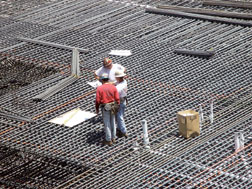 Pacific Coast Steel
|
There now are numerous state and local illegal alien worker restrictions on the books, creating a patchwork of laws with which contractors must comply. “They are criminalizing both the alien and the employer,” McPherson says. Contractors that fully comply with federal law may not be safe from local sanctions if their employees’ documentation is proved false, he says. “The feds aren’t doing anything on the front side, so local governments are stepping in.”
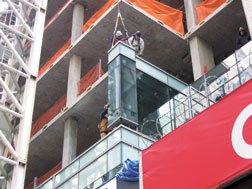 W&W Glass
|
A lack of a more comprehensive immigration policy also is hitting contractors in more technical specialties. Geotechnical specialty contractor Nicholson Construction’s new owner, France’s Soletanche-Bachy “has tremendous technical expertise, but immigration laws make it a problem to bring their experts here,” says Andy Walker, Nicholson’s president. Walker is troubled that, with a hot world construction market, “if foreign experts in this industry don’t come here, they’ll go elsewhere.”
No Red-Tag Specials Here
For most specialty contractors, materials prices seem to have moderated after a wild couple of years. “Steel seems to have leveled off with some small increases,” says Scott Schuff, CEO of Schuff International. “In 30 years, I’ve never seen steel tube conduit vary in price more than 5%, but it doubled over the past couple years,” says Pariseau of Sunwest. “But in the last 8 to 10 months, it seemed to moderate.” Still, steel and copper price hikes cost the firm $400,000 to $500,000 in profits over the past couple years, he laments.
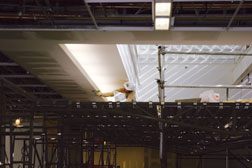 Guy Lawrence / ENR
|
However, there are local fluctuations in pricing. One company that is looking at an interesting ride is Seretta Construction in Florida. “With the big drop in the residential market in Florida, materials costs around here have come way down,” says McPherson. He estimates that concrete is down 20% and steel is down 15% from their peak prices, compared to rising prices at the firm’s Carolinas offices.
But McPherson worries about what may come in Florida because of an environmental lawsuit. In Sierra Club v. Flowers, a federal district court judge in July ordered the closing of all limestone quarrying in the Lake Belt region in western Miami-Dade County over concerns about runoff affecting the area’s drinking water. “Those quarries supply about a third of the aggregate in the area,” McPherson says. “We’re already getting warnings from ready-mix suppliers to expect increases of up to $15 per yard in the future.” He says that the runoff at the quarries have been monitored for years without a problem and is worried about what will happen if the ruling stands.
Get Home Safely
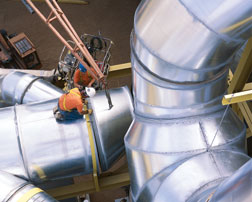 Superior Air Handling Corp
|
Safety continues to be a priority among the Top 600. “The initiatives from OSHA’s Strategic Partnership are working out great,” says MYR’s Koertner. MYR was one of the industry partners that helped to develop the electrical transmission and distribution construction safety training program in 2004 that was renewed in August 2006. “It takes a while for the program to take effect but it is effective,” Koertner says.
For many specialty contractors, safety is a full-time commitment that forces all employees to become involved. “Sometimes you have to play dirty with employees,” says Bacon. “You just ask them what would happen to their spouses or children if they were maimed or killed on the job. It makes them think. And it works.”
Safety also is paying off in workers’ comp premiums. “Our senior management is committed to safety and holds people accountable to ensure the message is received,” says Santacrose of Tecta America. He notes that the firm has a .43 experience rating modifier. Another firm that is pushing safety is Giroux Glass. “We’re at a .65 modifier,” says Anne Merelie Murrell, CEO. Between that and California’s worker’s compensation reforms, Giroux’s workers’ comp rates are going down.
Many California contractors agree that after a bumpy start, California’s workers’ reforms have begun to pay off for employers. “We were getting 25 to 30% in premium increases a few years ago,” says Brown of Sierra Pacific West. Now, his worker’s comp premiums are down at last.
You Want It When?
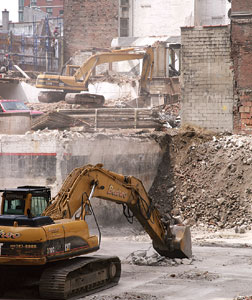 Guy Lawrence / ENR
|
One result on the current construction boom is that equipment is at a premium in most regions. “Lead times for heavy equipment are getting longer,” says Levy of Railworks. “The track business is very equipment intensive so we always took care of our equipment, but now its worth all the more so we are spending more time and money on maintenance.”
One state where contractors are really facing equipment problems is California, where new clean air regulations for off-road vehicles have firms scrambling. “It will cost about $13 billion for contractors to retrofit in the state,” says Brown of Sierra Pacific West. “The mom-and-pop shops won’t feel it much since they mostly rent and the big national contractors will simply rotate their older equipment out, but the mid-sized firms will take a hit.” Brown estimates that it could cost his firm upward of $50 million over the next five to seven years to fully comply with the new rules. “All we are asking for is a mechanism to let us to comply with the rules without major financial problems,” he says.
For some contractors, there is an added concern about acquiring equipment. “We use a lot of specialized drilling equipment, and most of it comes from Europe,” says Walker of Nicholson. But he says a lot of that equipment is now going to China and India, where the demand is so great. “With this demand and the weak dollar, we are spending as much as a 25 to 30% premium for this equipment.”


Post a comment to this article
Report Abusive Comment